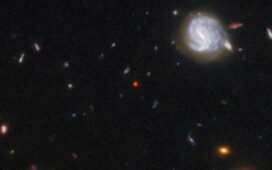When three wise men gifted baby Jesus with gold, frankincense, and myrrh, they had no idea one was made from colliding neutron stars.
On a frosty winter’s night more than 2,000 years ago, a young expectant mother found herself in a wooden manger as she prepared to give birth. Shortly after the delivery, three wise men from the east arrived, bearing gifts for the newborn: gold, frankincense, and myrrh. While these three treasured gifts were all valuable, only two of them are resources unique to planet Earth. The other one — gold — is found all throughout the Solar System and the Universe. For generations, we valued this element for its rarity, shine, luster, and physical and chemical properties. What we didn’t know, however, was how to create it.
As recently as five years ago, this remained the case. While there were numerous candidate processes for how gold could be created in the Universe, we had no idea which one dominated. In fact, there were no fewer than five separate candidates for how the element gold was made:
- in the more massive stars that fuse hydrogen into helium
- in dying stars that have reached the tail end of the red giant phase















